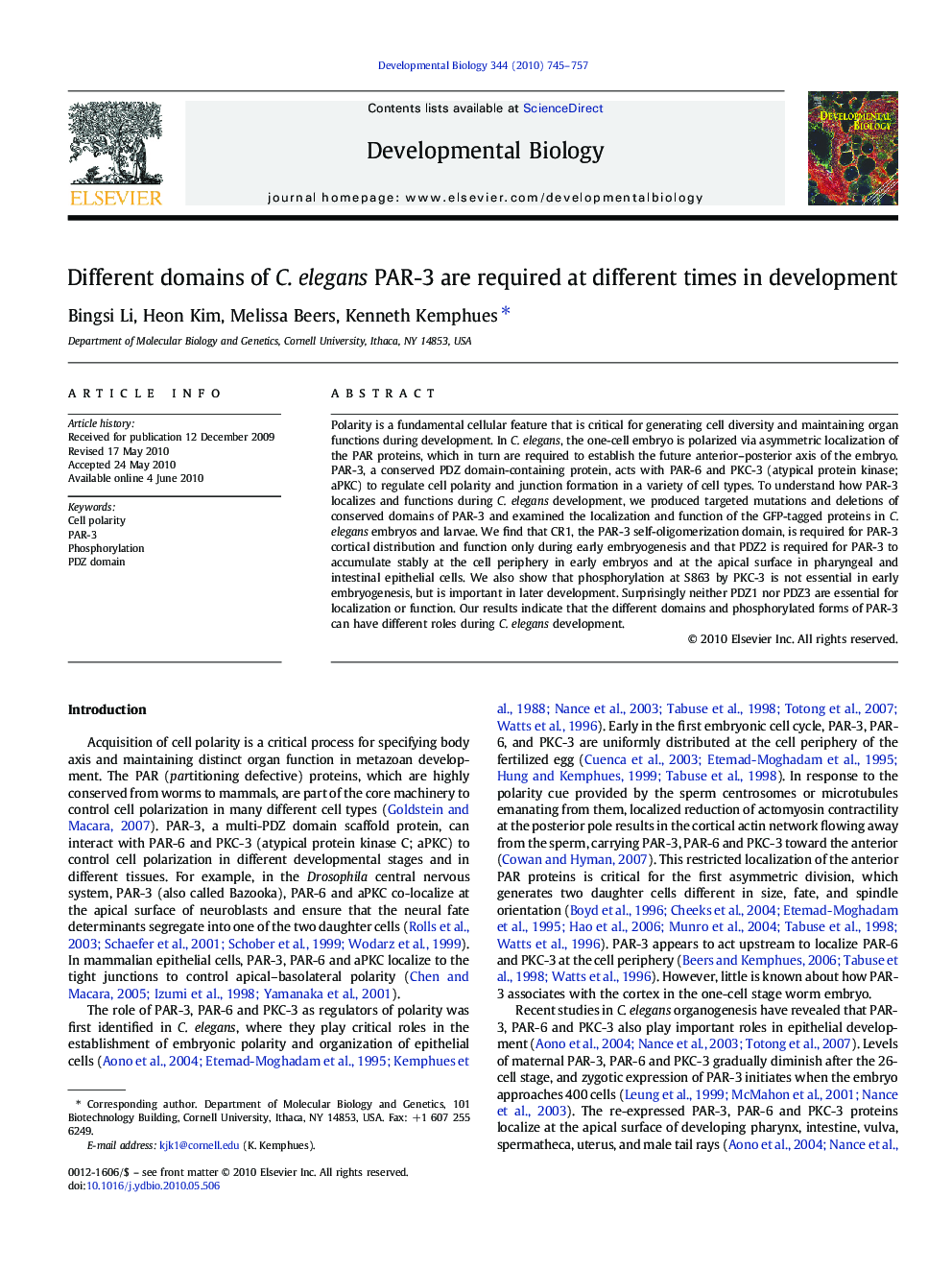| Article ID | Journal | Published Year | Pages | File Type |
|---|---|---|---|---|
| 2173859 | Developmental Biology | 2010 | 13 Pages |
Polarity is a fundamental cellular feature that is critical for generating cell diversity and maintaining organ functions during development. In C. elegans, the one-cell embryo is polarized via asymmetric localization of the PAR proteins, which in turn are required to establish the future anterior–posterior axis of the embryo. PAR-3, a conserved PDZ domain-containing protein, acts with PAR-6 and PKC-3 (atypical protein kinase; aPKC) to regulate cell polarity and junction formation in a variety of cell types. To understand how PAR-3 localizes and functions during C. elegans development, we produced targeted mutations and deletions of conserved domains of PAR-3 and examined the localization and function of the GFP-tagged proteins in C. elegans embryos and larvae. We find that CR1, the PAR-3 self-oligomerization domain, is required for PAR-3 cortical distribution and function only during early embryogenesis and that PDZ2 is required for PAR-3 to accumulate stably at the cell periphery in early embryos and at the apical surface in pharyngeal and intestinal epithelial cells. We also show that phosphorylation at S863 by PKC-3 is not essential in early embryogenesis, but is important in later development. Surprisingly neither PDZ1 nor PDZ3 are essential for localization or function. Our results indicate that the different domains and phosphorylated forms of PAR-3 can have different roles during C. elegans development.
